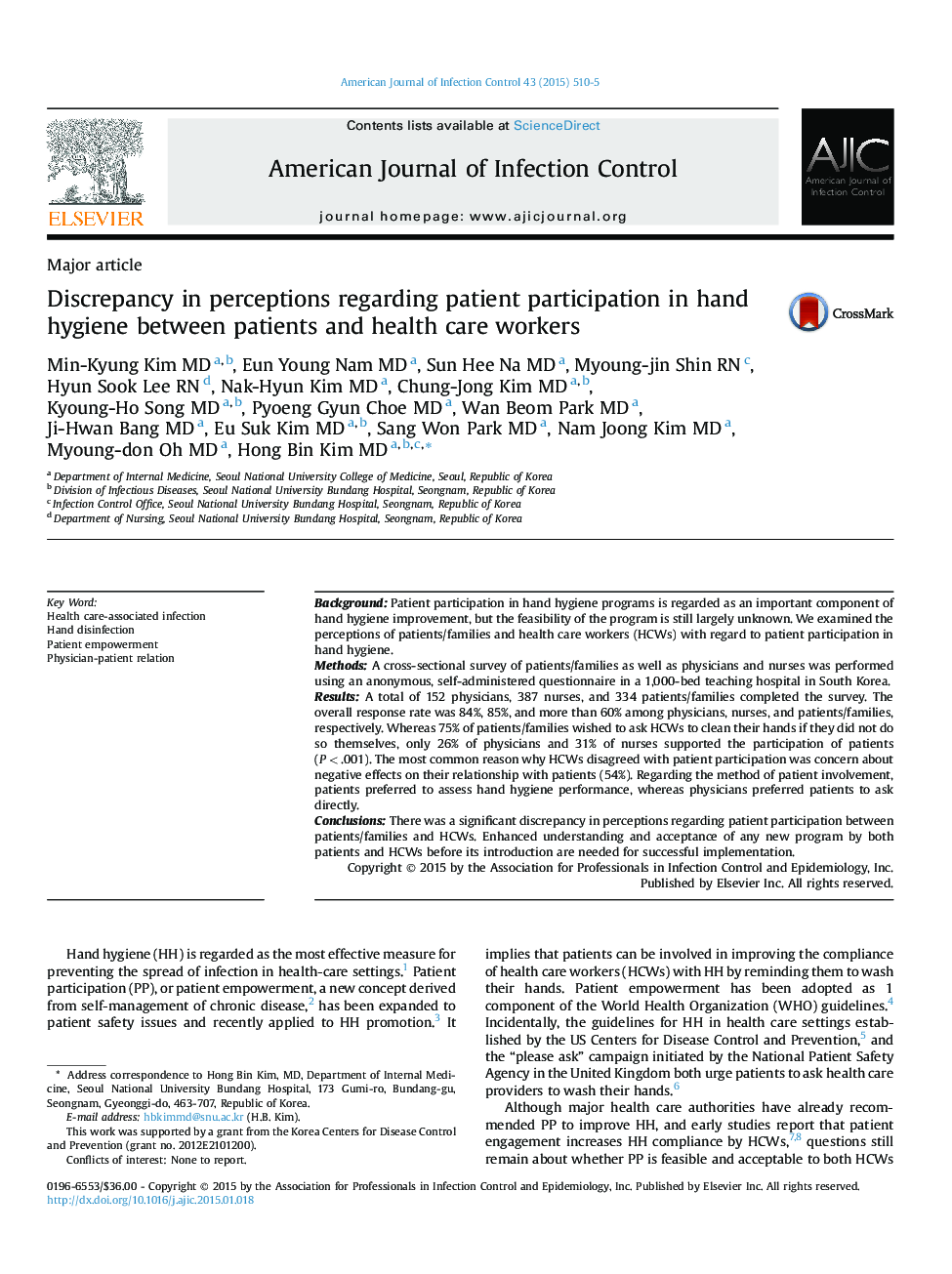| کد مقاله | کد نشریه | سال انتشار | مقاله انگلیسی | نسخه تمام متن |
|---|---|---|---|---|
| 5867076 | 1563473 | 2015 | 6 صفحه PDF | دانلود رایگان |
- Little is known about the acceptance of patient participation by the stakeholders.
- We conducted a hospital-based survey of patients and healthcare workers.
- While patients supported patient participation, healthcare workers did not.
- Patients preferred indirect feedback, but healthcare workers did not want appraisal.
- Healthcare workers worried about negative effects on the relationship with patients.
BackgroundPatient participation in hand hygiene programs is regarded as an important component of hand hygiene improvement, but the feasibility of the program is still largely unknown. We examined the perceptions of patients/families and health care workers (HCWs) with regard to patient participation in hand hygiene.MethodsA cross-sectional survey of patients/families as well as physicians and nurses was performed using an anonymous, self-administered questionnaire in a 1,000-bed teaching hospital in South Korea.ResultsA total of 152 physicians, 387 nurses, and 334 patients/families completed the survey. The overall response rate was 84%, 85%, and more than 60% among physicians, nurses, and patients/families, respectively. Whereas 75% of patients/families wished to ask HCWs to clean their hands if they did not do so themselves, only 26% of physicians and 31% of nurses supported the participation of patients (PÂ <Â .001). The most common reason why HCWs disagreed with patient participation was concern about negative effects on their relationship with patients (54%). Regarding the method of patient involvement, patients preferred to assess hand hygiene performance, whereas physicians preferred patients to ask directly.ConclusionsThere was a significant discrepancy in perceptions regarding patient participation between patients/families and HCWs. Enhanced understanding and acceptance of any new program by both patients and HCWs before its introduction are needed for successful implementation.
Journal: American Journal of Infection Control - Volume 43, Issue 5, 1 May 2015, Pages 510-515
